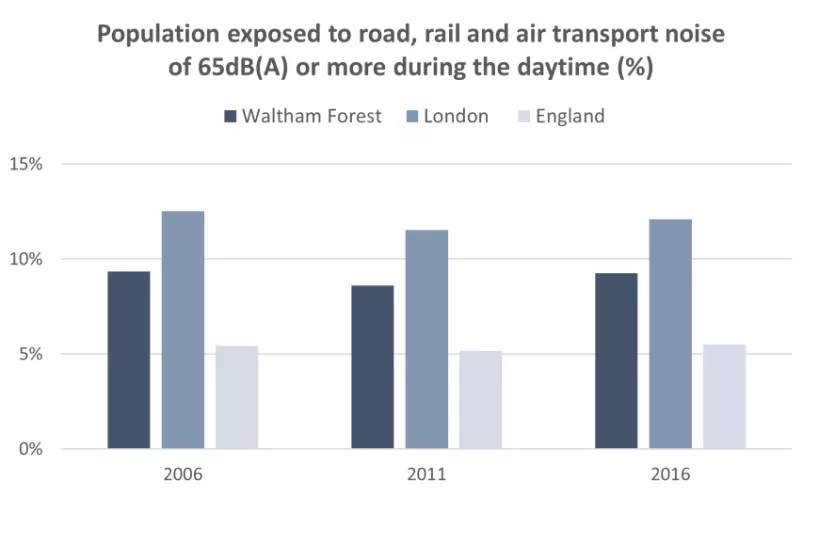Last updated: 20 November 2024
Next review: 20 November 2025
This content is part of the Waltham Forest JSNA. To see other JSNA content, visit the JSNA landing page
There are several direct and indirect links between exposure to noise and health and well-being outcomes. Noise exposure can cause disturbance and interfere with activities, leading to annoyance and increased stress. Furthermore, there is increasing evidence that long-term exposure to high levels of noise can cause direct health effects such as heart attacks and other health issues.
According to the World Health Organisation (WHO), noise pollution is classified as any sound above 65 decibels, which can be caused by things like traffic, construction, aircraft, and even barking dogs. Sixty-five decibels is equivalent to a normal conversation, whereas prolonged exposure to noise levels exceeding 70 decibels has the potential to cause hearing damage [1].
According to the most recent data, an estimated 9.2% of the population in Waltham Forest were exposed to road, rail, and air transport noise of 65 decibels (dB(A)) or more during the daytime. This figure is above the national average of 5.5% but below the regional average of 12.1%.

Source: OHID Public Health Outcomes Framework. Data from Office for Health Improvement and Disparities. Date accessed: 26 March 2023.
Reference:
[1] World Health Organisation (1980). Environmental health criteria 12. Date accessed 08 June 2023